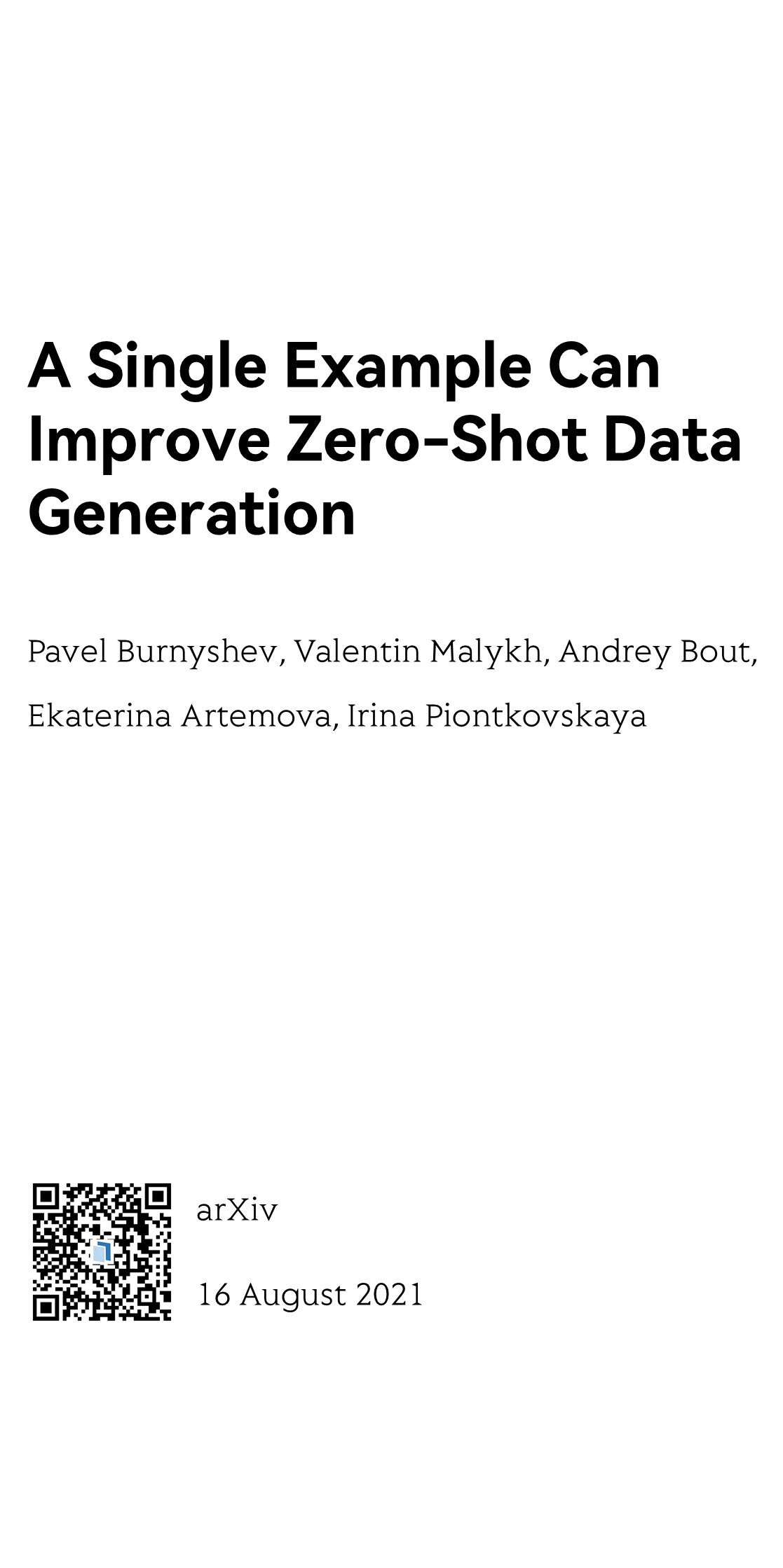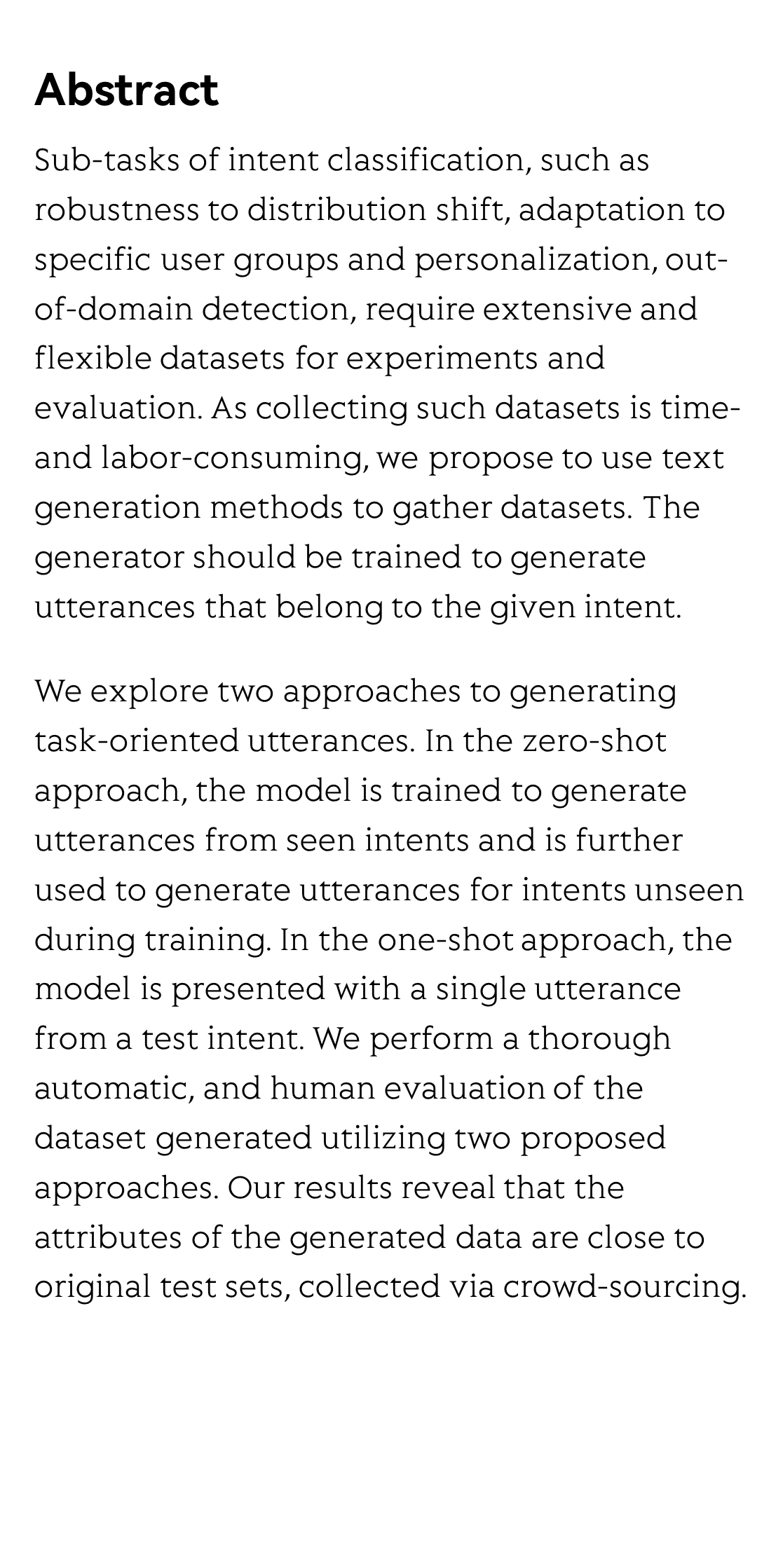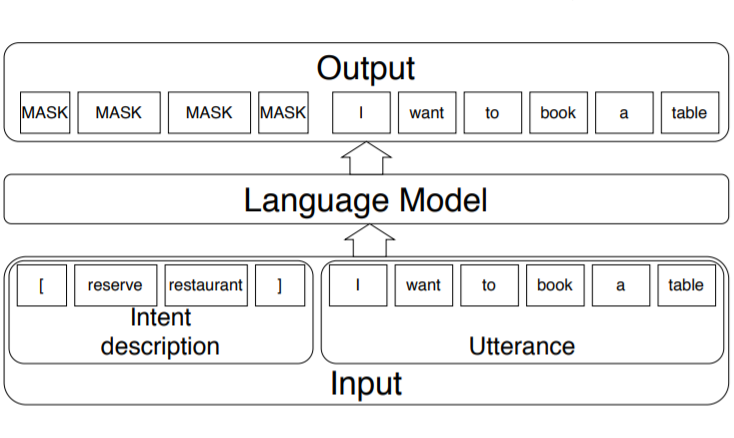(Preprint) A Single Example Can Improve Zero-Shot Data Generation
Pavel Burnyshev ¹, Valentin Malykh ¹ ², Andrey Bout ¹, Ekaterina Artemova ¹ ³, Irina Piontkovskaya ¹
¹ Huawei Noah's Ark Lab, Moscow, Russia
² Kazan Federal University, Kazan, Russia
³ HSE University, Moscow, Russia
arXiv, 2021-08-16
Abstract
Sub-tasks of intent classification, such as robustness to distribution shift, adaptation to specific user groups and personalization, out-of-domain detection, require extensive and flexible datasets for experiments and evaluation. As collecting such datasets is time- and labor-consuming, we propose to use text generation methods to gather datasets. The generator should be trained to generate utterances that belong to the given intent.
We explore two approaches to generating task-oriented utterances. In the zero-shot approach, the model is trained to generate utterances from seen intents and is further used to generate utterances for intents unseen during training. In the one-shot approach, the model is presented with a single utterance from a test intent. We perform a thorough automatic, and human evaluation of the dataset generated utilizing two proposed approaches. Our results reveal that the attributes of the generated data are close to original test sets, collected via crowd-sourcing.
Flicker minimization in power-saving displays enabled by measurement of difference in flexoelectric coefficients and displacement-current in positive dielectric anisotropy liquid crystals
Junho Jung, HaYoung Jung, GyuRi Choi, HanByeol Park, Sun-Mi Park, Ki-Sun Kwon, Heui-Seok Jin, Dong-Jin Lee, Hoon Jeong, JeongKi Park, Byeong Koo Kim, Seung Hee Lee, MinSu Kim
Opto-Electronic Advances
2025-09-25
Dual-frequency angular-multiplexed fringe projection profilometry with deep learning: breaking hardware limits for ultra-high-speed 3D imaging
Wenwu Chen, Yifan Liu, Shijie Feng, Wei Yin, Jiaming Qian, Yixuan Li, Hang Zhang, Maciej Trusiak, Malgorzata Kujawinska, Qian Chen, Chao Zuo
Opto-Electronic Advances
2025-09-25





